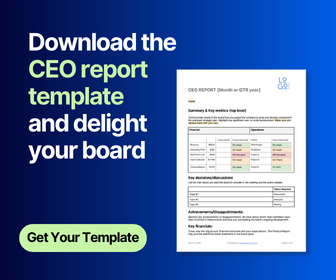The Board’s Role is Financial Governance Not Financial Management
At the first meeting of a newly elected local authority a councillor re-elected after a long spell away from the council chamber, asked why there wasn’t a ‘cheque schedule’ in the finance report. Puzzled, the young finance manager politely asked for clarification. “You know”, responded the councillor, “the list of all the payments the council made last month. We need to check that council staff haven’t spent any money they shouldn’t have. That’s how we keep you people honest.”
It turned out this councillor believed his job was to review and evaluate all staff expenditure decisions. His experience on the council a decade or so earlier had conditioned him to see this as the way to exert financial control. The council discussion that followed underlined the need to understand the difference between governance roles - the governing body’s responsibility for financial governance vs the chief executive’s responsibility for financial management.
Financial governance has two main components: policy setting and policy compliance monitoring.
Policy Setting
Governing boards make some decisions, but they meet relatively infrequently. Most operational and related-expenditure decisions must be made on a minute by minute, hour by hour basis. To allow this to happen boards must delegate authority to the chief executive who, depending on organisation size, will sub-delegate to other staff.
When the board delegates authority it has a choice. To give guidance, perhaps even direction, as to how that delegated authority is to be exercised – or not. Unless the board has an outsize appetite for risk, however, it really doesn’t have a choice. It is accountable for decisions made on its behalf and so must have some way to ensure delegated decisions are generally consistent with its expectations.
The tool for this is the board’s policy setting role. It must create a policy framework to set out its expectations, firstly on the outcomes it seeks. Secondly, recognising that ‘the ends don’t justify the means’ employed to achieve them, it must define limits or boundaries to executive decision-making autonomy. Reflecting the board’s risk appetite, these limits will typically be expressed in terms of the situations and circumstances decision makers should avoid and so are most powerfully expressed proscriptively.
A common example is to limit the chief executive’s authority to commit expenditure over a defined sum. Given the board’s natural concern with solvency it would also set a limit below which the chief executive could not let the ratio of current assets to current liabilities fall. Another good example would be to instruct that the chief executive not to allow or commit expenditure which is not directly relevant to the achievement of the board’s strategic priorities (or consistent, in a charity, with the purpose for which the money was raised).
A financial governance approach is both powerful and highly efficient in other respects. For example, too many boards get donkey deep in budgeting to the point where they tell and then approve what the chief executive can spend - not just on different categories of operational expenditure but on line-items within the budget. Most budget items are considerably below the level most boards would need to control. Because a budget is just one of the chief executive’s tools for achieving the board’s objectives the board should not even approve the budget per se. It should, however, want to assess whether the chief executive’s financial planning is consistent with the fulfilment of the board’s policy relating to desired financial outcomes (e.g., profit/surplus, management of reserves, dividends, compliance with bank covenants etc.).
Once the board’s policies have been set and decision-making authority delegated, the chief executive doesn’t have to come and ask the board for permission. By setting policy the board’s expectations informs staff decisions and protects these once made from the vagaries of board members’ individual judgements. They can get on and make things happen and be confident that the policy ‘goal posts’ won’t be moved without notice.
Another important principle is that the chief executive is entitled to a 'reasonable interpretation' of the board’s policies. The council member referred to earlier saw nothing wrong in judging staff expenditure decisions against criteria that were essentially no more than his personal preferences. He was also oblivious to the simple fact that he would be looking at payments already made and now in someone else’s bank account!
Policy Compliance Monitoring
Some chief executives are happy to take the delegation of authority and salute the policy but then bridle at any request from the board that might let it judge whether the chief executive is in policy compliance.
Wrong! The chief executive is obligated to not only report compliance (or non-compliance) but to demonstrate that how they are achieving compliance is consistent with the board’s policy criteria. This allows the board to check that the chief executive is interpreting the policy as intended. It is a catalyst for board and chief executive to discuss whether the policy ‘goal posts’ are in the right place. This conversation will also flush out any board member interpretations or expectations that are out of alignment with the rest of the board.
Starting with what the board is concerned about financially, expressed in policy terms, is likely to keep both board and management focused. They can work on what is likely to be no more than a handful of financial measures that give the board clear sight of the financial condition of the organisation and where it is tracking. The format and content of most board finance reports are from a time when board membership was dominated by accountants. On most boards this no longer the case. With varying degrees of financial literacy board members need something better than a ‘data dump’ with relatively little analysis or regard to what is important at the board level.
Because the same measures do not need to be reported on at every meeting boards should set a schedule of reporting that puts attention on key financial variables when they are most relevant to the cycles of the business. Mostly the chief executive and her team will be relied on for this information. Classically formatted accounting reports will still be relevant but primarily to the board’s Audit Committee. To complement the work of that committee boards shouldn’t hesitate to engage outside help for periodic, independent deep dives into important aspects of financial performance.
Share this
You May Also Like
These Related Stories

What does the ideal relationship between the board chair and the CEO look like?

Seven Steps to Effective Governance for Financial Advice Providers


